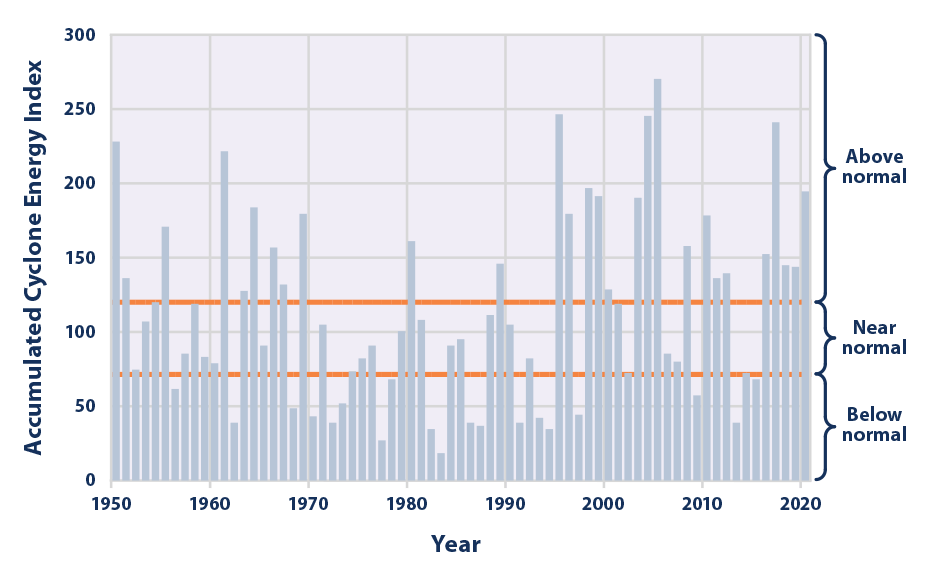Climate Influences on Hurricanes
Climate change is worsening hurricane impacts in the United States by increasing the intensity and decreasing the speed at which they travel. Scientists are currently uncertain whether there will be a change in the number of hurricanes, but they are certain that the intensity and severity of hurricanes will continue to increase. These trends are resulting in hurricanes being far more costly in terms of both physical damages and deaths. To avoid the worst impacts moving forward, communities in both coastal and inland areas need to become more resilient.
Hurricanes are subject to a number of climate change-related influences:
Warmer sea surface temperatures intensify tropical storm wind speeds, giving them the potential to deliver more damage if they make landfall. Over the 39-year period from 1979-2017, the number of major hurricanes has increased while the number of smaller hurricanes has decreased. Based on modeling, the National Oceanic and Atmospheric Administration predicts an increase in Category 4 and 5 hurricanes, alongside increased hurricane wind speeds. Warmer sea temperatures also cause wetter hurricanes, with 10-15 percent more precipitation from storms projected. Recent storms such as Hurricane Harvey in 2017 (which dropped more than 60 inches in some locations), Florence in 2018 (with over 35 inches) and Imelda in 2019 (44 inches) demonstrate the devastating floods that can be triggered by these high-rain hurricanes.
Sea level rise is already making coastal storms more damaging and is expected to continue worsening. Globally, average sea level has risen over half a foot since 1900 and is expected to rise 1 to 2.5 feet during this century. Coastal regions will experience the worst of these effects. Sea level rise increases the risk of coastal flooding and has intensified the impact of several recent storms. A study of Hurricane Katrina estimated that higher sea levels led to flood elevations 15-60 percent higher than climate conditions in 1900. A study of Hurricane Sandy estimated that sea levels at the time increased the likely of flooding by three times and that additional rising will make severe flooding four times more likely in the future.
Changes in the atmosphere, like the warming of the Arctic, may be contributing to other trends seen in the hurricane record. Hurricanes today travel more slowly than they previously did. Though the mechanism that is causing this slowdown is still debated, it is clear that storms are “stalling” and subjecting coastal regions to higher total rainfall and longer periods of high winds and storm surge. This has increased the destruction caused by recent storms in the United States.
The warming of mid-latitudes may be changing the pattern of tropical storms, leading to more storms occurring at higher latitudes. A northward shift in the location at which storms reach their peak intensity has been observed in the Pacific, but not in the North Atlantic, where hurricanes that make landfall in the Gulf and East Coast are created. This shift could put much more lives and property at risk, however more research is required to better understand how hurricane tracks might change.

